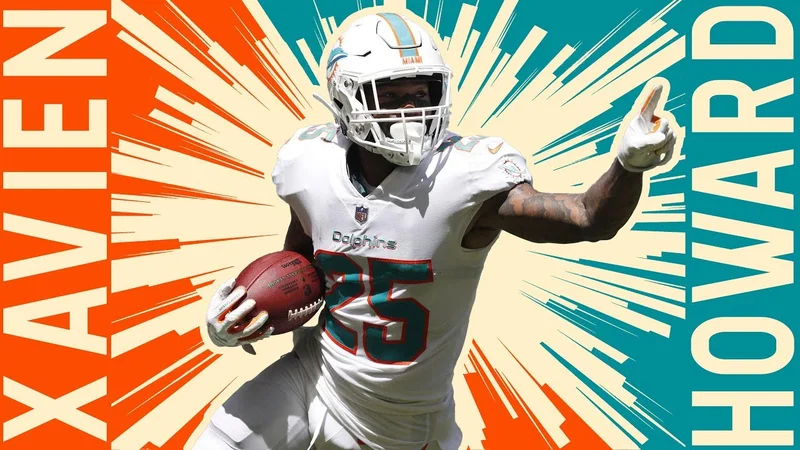The abrupt retirement of a veteran athlete is often framed as a noble departure, a conscious choice to prioritize family or health over the relentless grind of professional sports. When Xavien Howard announced he was stepping away from the Indianapolis Colts, and the game, the narrative quickly formed around a familiar, sentimental theme: "My kids are more important to me than football." It’s a respectable, unimpeachable sentiment.
It is also, in this case, a distraction from the data.
The story of Howard’s four-week tenure with the Colts is not one of a sudden familial epiphany. It is a clinical case study in rapid, irreversible performance decline. The numbers preceding his departure are not ambiguous; they are definitive. They tell a story of a player whose long and decorated career came to a sudden, statistical end, and the retirement was simply the logical conclusion to an equation that no longer balanced.
Let's look at the terminal data points. In his final game against the Los Angeles Rams, Howard was not just a weak link; he was a designated target. Rams quarterback Matthew Stafford completed six of nine passes thrown Howard’s way for 96 yards, including a touchdown to Puka Nacua. This wasn't an anomaly. It was the acceleration of a trend. Two weeks prior, against the Denver Broncos, rookie quarterback Bo Nix posted a perfect passer rating when targeting Howard, completing all seven of his attempts for 75 yards and a touchdown.
For the season, opposing quarterbacks completed 66.7 percent of their passes against him and posted a passer rating of nearly 125—to be more exact, 124.3. For a player who built a formidable reputation with the Miami Dolphins, these are not the metrics of a veteran shaking off rust. They are the metrics of a system failure.
The Cold Arithmetic of a Strategic Exit
The Discrepancy in the Ledger
To understand the severity of this collapse, one must contrast the liability on the field in Indianapolis with the asset he once was. This is a two-time All-Pro, a player whose 29 interceptions since 2016 are the second-most in the entire league over that span. A player who has amassed significant wealth over his career (total career earnings are reported north of $80 million), insulating him from the need to play past his expiration date.

The Colts, facing a series of injuries in their secondary, signed the 32-year-old as a calculated gamble. Defensive coordinator Lou Anarumo, who had coached Howard in Miami, expressed confidence that the former star could contribute despite a year away from the game. The initial narrative was one of a savvy veteran providing stability.
But the on-field performance created an immediate and glaring discrepancy between resume and reality. The penalties alone were a significant indicator. In one sequence against Denver, Howard was flagged three times in five plays. This isn't the sign of a player adjusting to game speed; it's the sign of a player whose physical tools can no longer keep pace with his assignments.
I've analyzed hundreds of corporate turnarounds and asset valuations, and the pattern is familiar. Past performance is a powerful anchor for perception, but current data is the only reliable predictor of future outcomes. The Colts coaching staff, while publicly supportive, was sending clear signals that an evaluation was underway. "Rust or no rust, we’ve got to make sure we’re out there and we’re guarding the guys that we’re tasked to guard," Anarumo stated, a diplomatic but clear indictment. The conversation had shifted from whether Howard would return to form to whether he could even remain on the field. The team was already considering younger, unproven options like Mekhi Blackmon and Johnathan Edwards. A change was not a possibility; it was an inevitability.
This is the critical context for his retirement. The decision was not made in a vacuum. It was made at the precise moment the data became indefensible and his role as a starter became untenable. To be benched after being signed as a veteran savior, for a player with Howard’s history, would be a profound professional indignity.
Retirement, framed as a personal choice for his children, offered a strategic exit. It allowed him to control the narrative, to leave on his own terms rather than being escorted out by the depth chart. It was a move to protect a legacy built over years from being tarnished by a few brutal weeks of data. It was, in essence, the last savvy defensive play of his career—not against a receiver, but against the numbers themselves.
The Final Calculation
This wasn't a decision of the heart versus the helmet. It was a matter of arithmetic. The data points from his final games were not noise; they were a clear signal that the competitive window had closed. Xavien Howard did not choose his family over football. He chose a dignified exit over a statistically mandated one. He saw the final numbers on the spreadsheet and rationally decided to close the book himself before someone else did it for him.
Reference article source:

